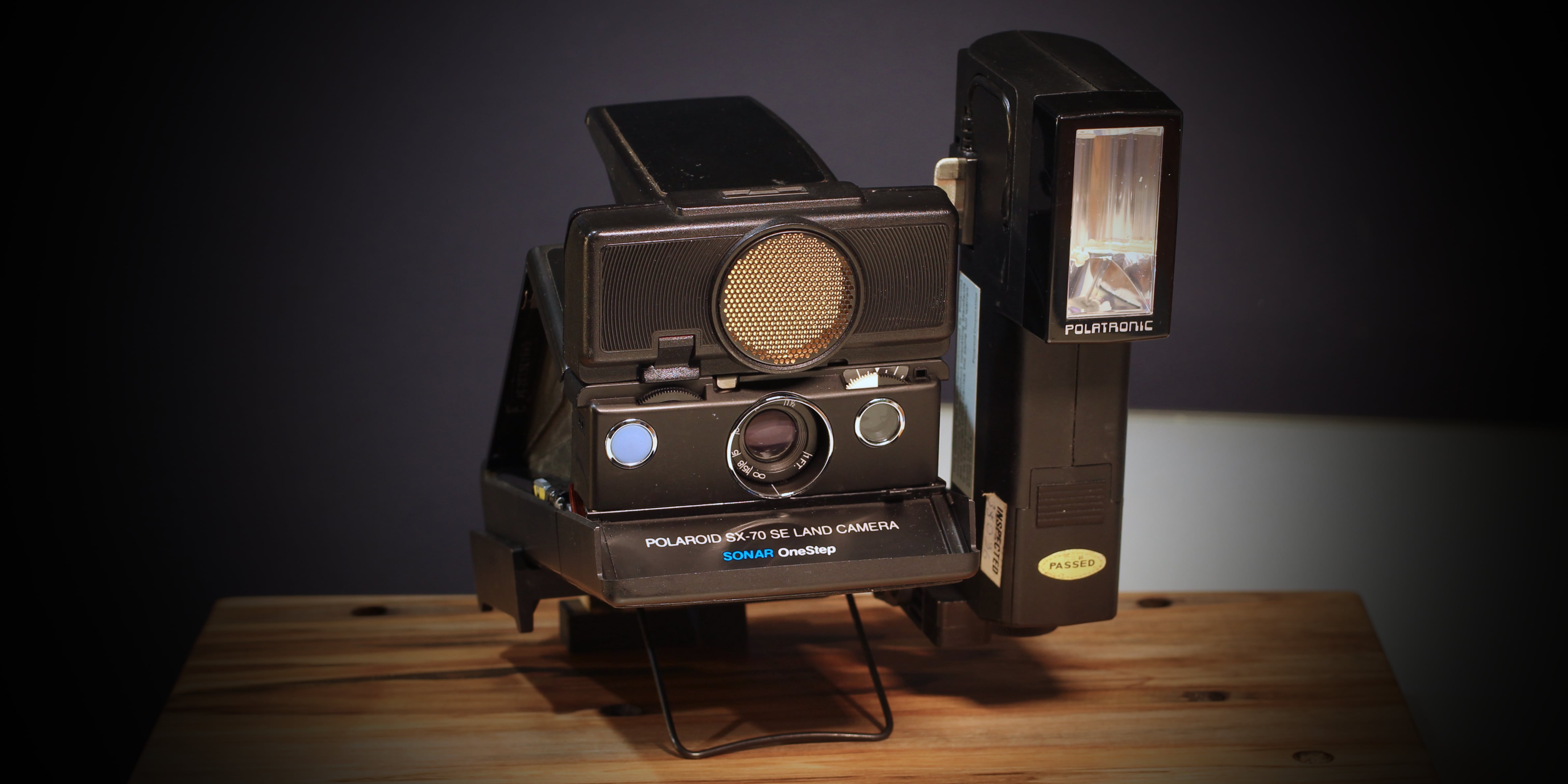
This is a seriously cool camera. Not only does it have that vintage futuristic look to it, especially with the Polatronic flash and its MICR style font, it is probably the ultimate realization of Edwin Land’s dream of creating an unobtrusive instant camera. The original SX-70 was great, but very shortly after it was released the split prism had to be added to aid in precise focusing. Land was not a fan of the focusing aid which he thought pulled people out of the moment. With the sonar autofocus added, the split prism could be dropped. SX-70 sonar photographers only need to point and shoot, and they would have a photograph in minutes. Since the sonar module uses sound rather than light to focus, it is just as simple to take photos in low light with a flash. It is truly amazing how well this 1970s autofocusing technology works.
If there is a shortcoming to this camera it might be in the styling. It’s just black. Black plastic seems to be the default for cheap, modern electronics. Maybe this camera predates the commoditization of black plastic electronics, but it is inevitably still seen through that lens. The SE version has a blue shutter button, which is novel for SX-70s. I guess that I am just partial to the sleek classic styling of the original SX-70. The tan leather on the chromed body is classy, and the lack of strap lugs and tripod socket make it so streamlined. Then again, the giant third eye of the sonar would be too incongruous if it were thrown onto a tan and silver SX-70. In general the sonar module has a bolted on appearance, but it looks slightly less awkward and out of place on the all black body style.
Despite its grafted on appearance, the sonar module makes it so much easier to capture spontaneous moments. This is especially true when photographing children, animals, or other creatures that find it difficult to hold still while focus is dialed in. It was a technology which was ahead of its time yet still works great today, that is unless the pickoff fails, which is a common problem with these cameras. When I received this sonar it had some serious gremlins. It did not work properly, but it failed in different ways. It wouldn’t power on, or it wouldn’t release the shutter, or the focus wouldn’t work, or the focus would stop at 5 feet. I was afraid that some of the electronics were fried. When I opened it I found something a little stranger. The metal frame components had some sort of fuzz. I had never seen anything like this before. I didn’t test the fuzz to see exactly what it was, but if it conducted electricity it was thick enough in spots to have caused electronic shorts.
Fortunately, after thoroughly cleaning the fuzz from the insides of the camera it worked consistently. However, it consistently focused at 4-5 feet. This is the sign of a failed pickoff. It seems that the camera’s electronics have a fail safe, if no input from the pickoff is detected within a certain time then the focusing motor is stopped to prevent damage. The time it takes for the failsafe to kick in is about the same time it takes to focus to 4-5 feet. So, I borrowed a pickoff from a working Sonar OneStep, itself a nice camera which I intend to get a new pickoff installed in. After installing the newer pickoff, the camera worked fantastically. I then disassembled the rest of the camera so that I could give it a full cleaning. With final reassembly and a new leather cover, the camera is a looker and a shooter.
Polaroid introduces SONAR automatic focusing
Life doesn’t just sit there waiting for you to focus. So Polaroid has invented a way for sonar to focus for you automatically. You press one button and that’s all. Within a split second inaudible sound waves dart to the subject and back, and the lens whips into focus. With Polaroid’s new Sonar OneStep Land Cameras you can get sharp, precisely focused pictures every time. And see them in minutes.